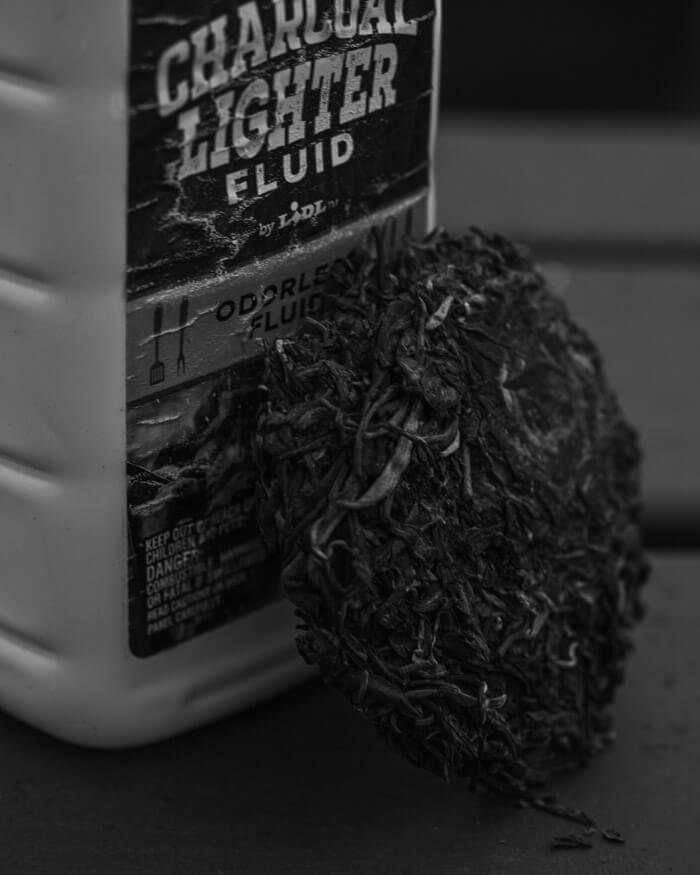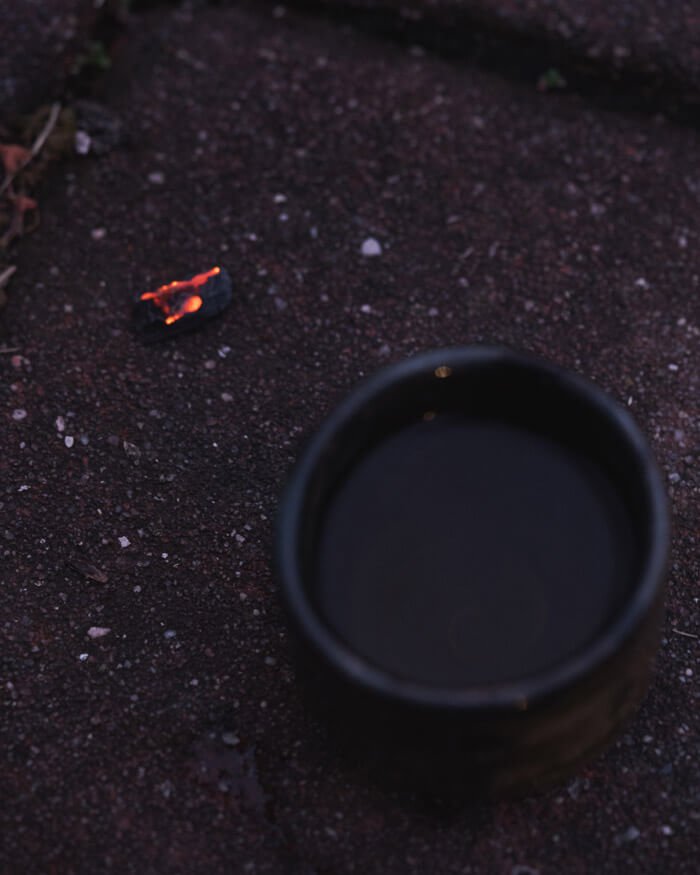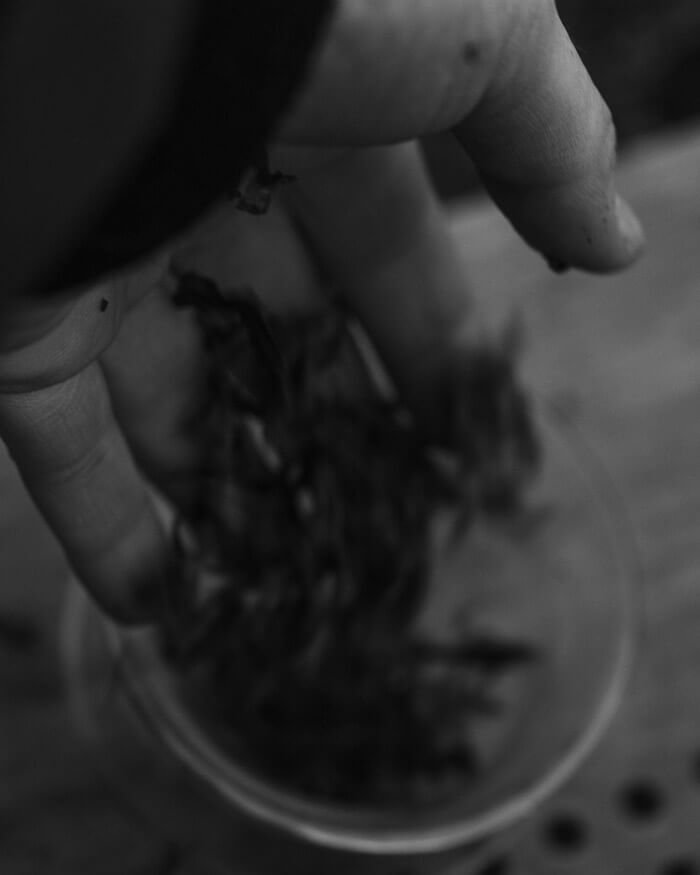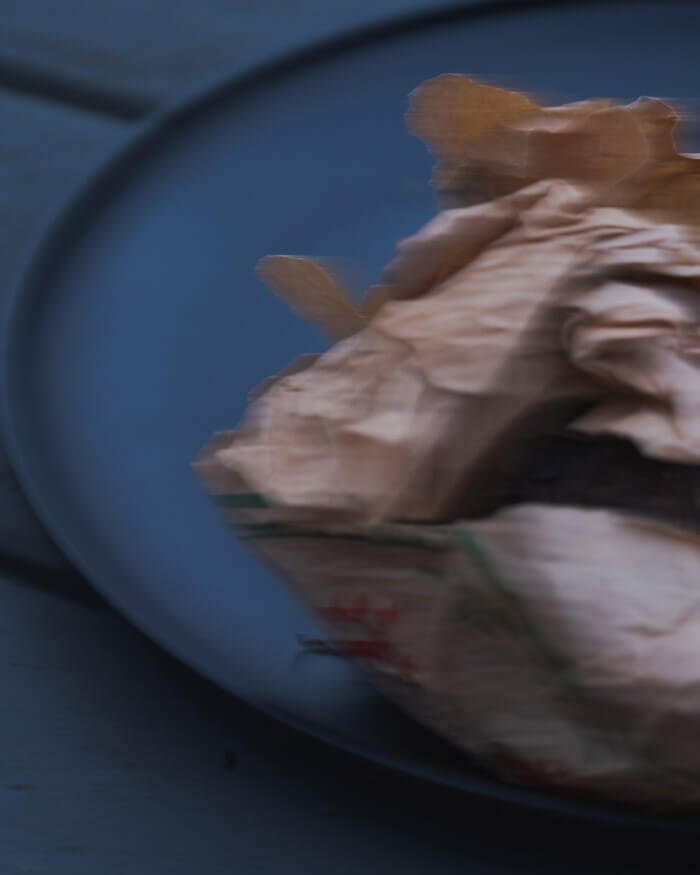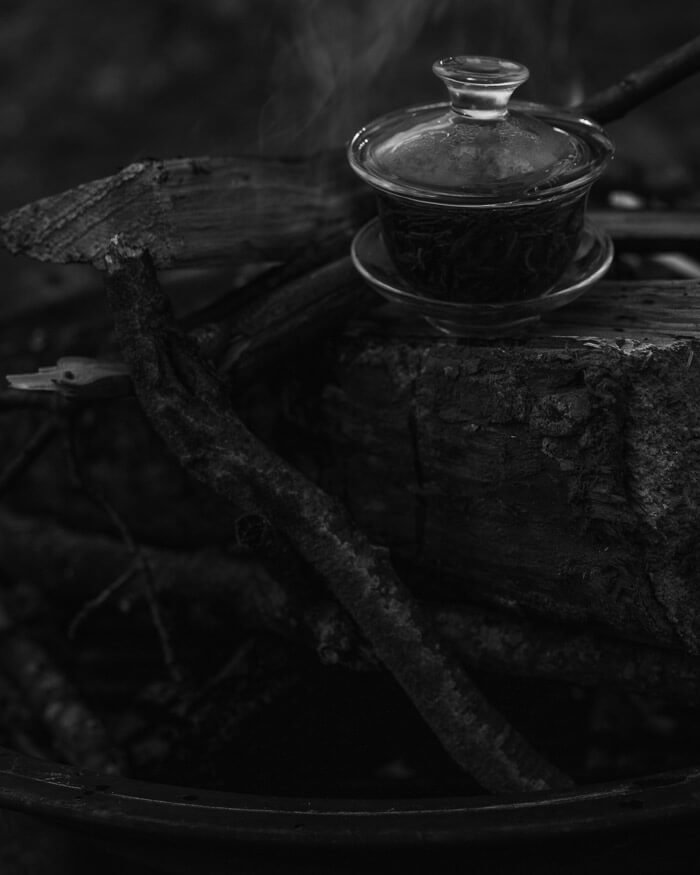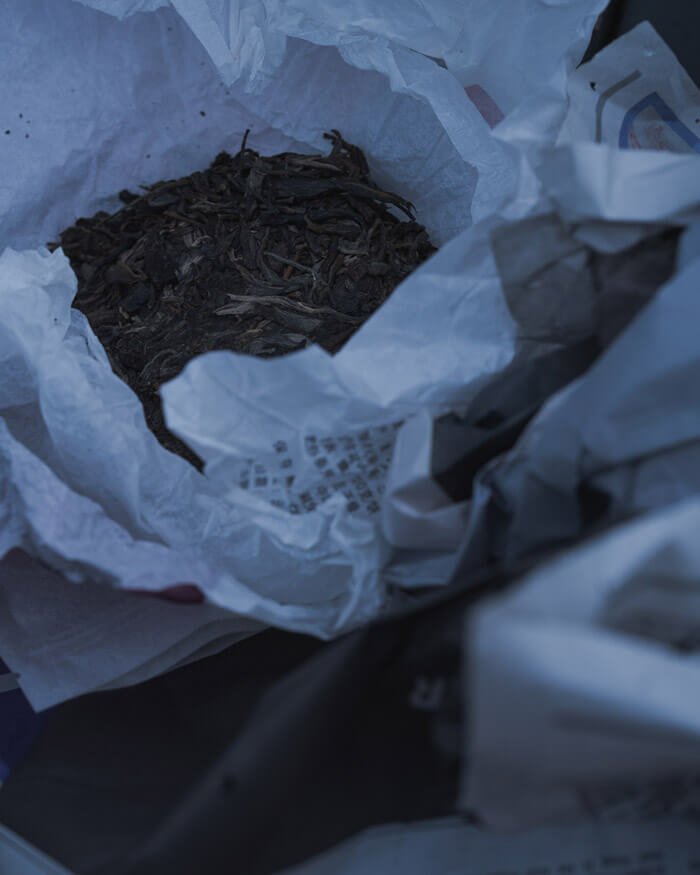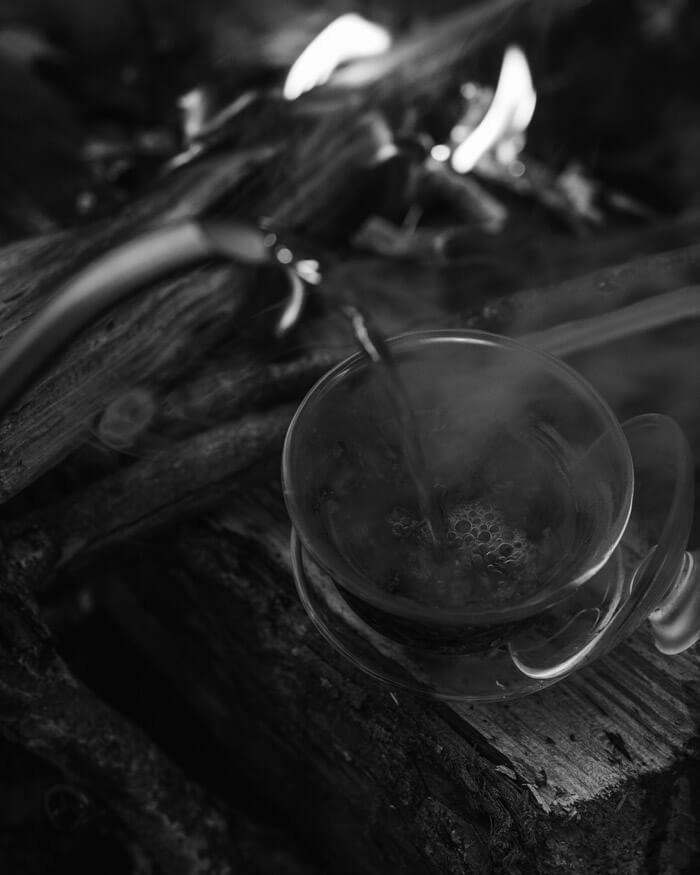7 Things for Beginners to Know About Pu Er Tea
When I was first introduced to tea, I was always confused by Pu Er. Searching online I’d read conflicting information.
Is Pu Er a category of tea, or not? (It’s not.)
Is Dark tea Pu Er? (No, but some Pu Ers can be Dark Tea.)
What is Shou Pu vs Shen Pu?
It was like the deeper I dug the more miscommunication there was and this only got worse when I found factual information because it was so overly complex my head would be swimming. So that’s why, years after my discovery of tea, I put this guide together. I want to demystify Pu Er tea from a high level. Make it simple, and go through 7 things for beginners to know about Pu Er.
1 - Pu Er is a Style of Tea, Not a Category
This might come as a surprise, especially if you’ve read (like I have) lots of articles on Google that say otherwise, but Pu Er is not a category of tea. It’s simply a style of tea making from the Yunnan province in China.
Easy metaphor:
Think about categories of language: French, English, Russian, etc.
You could write any of those languages in bold, italicized, underlined, cursive. That’s the style.
If you tried to make “Pu Er” style tea outside of Yunnan, it would not be Pu Er. Just like how your red wine can only be Bordeaux wine if it’s from Bordeaux. Pu Er is a style of tea that can be further divided into 2 different subcategories:
Sheng Pu (Raw Pu Er), which is in the “green tea” category of tea.
Shou Pu (Cooked Pu Er), which is in the “black tea” category of tea. (Not to be confused with what we call “black tea” in the West, which is actually red tea.
Vocab Tip:
The tea leaves are not called “tea” during the production process. It’s only tea once the product is finished!
The leaves are called Xian Ye or Cha Qing before or during processing.
2 - There are 2 Types of Pu Er Tea: Sheng Pu, and Shou Pu
While Pu Er is a style of tea and not a category… there are 2 subcategories within Pu Er - Sheng Pu and Shou Pu, which mean “raw uu” and “ripe pu.” These teas are radically different from each other – especially because they belong to different categories of tea! Let me explain what that means.
The 6 Categories of Tea
Chinese tea all comes from the same plant: the Camellia Sinensis. And tea is divided into 6 classical categories depending on how the same tea leaf is processed (not based on the level of oxidation in tea, which is another misconception in tea!)
The 6 categories are:
Green Tea.
Yellow Tea.
White Tea.
Wu Long (Oolong Tea.)
Red Tea (Known as “Black Tea” in the West.)
Black Tea (Known as “Dark Tea” in the West.)
What Sheng Pu and Shou Pu Are
With this in mind, we can fit Sheng Pu and Shou Pu into their corresponding boxes.
Sheng Pu fits within the “green tea” category.
And Shou Pu fits within the “black tea” category. (Not to be confused with Red Tea which is called “Black Tea” in the West.)
We’ll explore why these Pu Ers fit into these categories in the next 2 points.
3 - Sheng Pu Er is Actually Green Tea
Now when it comes to Pu Er, one of the two categories is called Sheng Pu (or Raw Pu Er.) Sheng Pu is a style of Pu Er that’s actually part of the Green Tea category. Funny enough, Sheng Pu is basically an incorrectly made Green Tea.
Tip:
To understand why we need to understand what the point of “green tea” is.
With Green tea, we want to denature all the enzymatic potential in the tea leaf.
By doing this we can stop the tea from oxidizing (turning brown.)
See, green tea goes through a process known as Sha Qing which literally means “kill green.” This is referring to destroying the enzymes within green tea by applying high heat. By doing this the tea is “frozen” in its fresh, green state.
It turns out there are a bunch of different wants to achieve this:
Steaming, then baking dry, known as Zheng Qing.
Stir-frying then baking dry, known as Hong Qing.
Stir-frying and drying in a wok, known as Chao Qing.
And finally, Stir-frying and drying in the sun, known as Shai Qing.
Sheng Pu Uses the Sun-Dried Sha Qing 晒青 method
After picking, the tea leaves are left out in the sun to briefly wilt. Next, the tea leaves are cooked in large batches in a wok. With most green teas, the high heat during the wok firing kills virtually all the enzymes in the leaf (that cause oxidation.)
However, with Sheng Pu, the large batches of tea at one time prevent all of the enzymes from being denatured, which means the tea can continue its enzymatic metabolism - slowly turning from a green tea into a red tea at a snail’s pace. This is the “mistake” in Sheng Pu - with green tea, we normally denature all the enzymes. With Sheng Pu, we leave some enzymes active.
This is why Sheng Pu has the potential to be aged, similar to fine wine. After the stir-frying, the hot and moist leaves are left out in the sun to fully dry. Sun-drying further enhances the flavor and is a necessary step for properly made Pu Er.
Quick Tip:
What separates a chocolate cake from a chocolate lava cake?
Both are the same material. Both are cooked and baked. Both are chocolate-baked desserts.
The difference is that the lava cake is not thoroughly cooked, which gives it its distinct style, different from a fully baked cake.
This quick tip is overly simplified, but it helps illustrate a metaphor for how Pu Er style green tea is different from other green tea.
Why Does Allowing Enzymes to Live Important for Sheng Pu?
By not denaturing all of the enzymes in Sheng Pu, we’re enabling the tea the capacity to enzmatically ferment over time. This is not to be confused with getting stale as we wrote about in our “does tea go bad” article.
This chemical change in the leaf mellows the tea, tones down the harshness, and welcomes in earthy notes and subtle sweetness. You’re basically going from a green tea to a red tea.
This doesn’t mean that young Sheng Pu is bad, or that you must age Sheng Pu, only that we can experience the warmth and character of the tea over a longer duration of time. We can note the subtle differences as time moves on and reflect on the changes, just like we do when observing photography. This is all possible through denaturing most, but not all, of the enzymes in Sheng Pu.
Quick Tip:
We denature most, but not all, the enzymes in Sheng Pu.
Why? Because the more active enzymes are left in the leaf, the faster it will oxidize.
If we don’t denature any, the tea will quickly fully oxidize - which is exactly what red tea (known as black tea in the West) is!
4 - Shou Pu is Part a True Black Tea
Next up is Shou Pu (Also known as Cooked, Ripe, or Finished Pu.) Shou Pu is actually a recent innovation, created by the Kunming Tea Factory in 1973. While Black Tea existed before this, the style of Shou Pu did not. Interestingly, even though Shou Pu does not have a long-established history, it is perhaps the most significant Black tea today due to its rapid popularity especially in places like Hong Kong, where it’s typically consumed with Dim Sum.
And just like Sheng Pu, Shou Pu must be made in Yunnan province to be called a Shou Pu Er.
Shou Pu Processing
The basic process for making Shou Pu looks like this:
Start with Sheng Pu, Sun-dried green tea.
Pile it together and cover it with a tarpaulin in a moist environment.
Let ferment for about 90 days, occasionally mixing the material.
This process is known as Wet Piling 渥堆 and it’s effectively a form of composting.
What Wet Piling 渥堆 does
The high humidity and warmth make the Mao Cha (rough, unfinished tea) a perfect environment for microbial fermentation. Small life forms begin to break down the tea, greatly altering its flavor and aroma. The resulting tea will have woodsy, earthy aromas and be less complex - more mellow and simple.
The chief microbe responsible for this fermentation seems to be a fungus known as Asperilligus Niger and I’ve written all about this in my Shou Pu Fermentation article here which goes into detail on the wet piling technique.
Microbial Fermentation Versus Enzymatic Fermentation
In the tea world, you’re going to hear the word “fermentation” thrown around as it describes the complex changes within tea during processing. However, the vast majority of the time fermentation is not referring to microbial fermentation (like in Yogurt, Wine, etc) but instead to enzymatic metabolism. The very small amount of tea that goes through true microbial fermentation is known as a Black Tea (known as “Dark Tea” in the West.)
Because of this, we call Black tea Post-Fermented tea. That’s because other teas such as Wu Long (Oolong), Red Tea, White Tea and Yellow tea are enzymatically fermented. Black teas go through a post-fermenting microbial metabolism.
Easy Pointers:
- Microbial fermentation is like turning apples into apple wine or apple brandy. Microscopic life chemically changes the apple.
- Enzymatic fermentation is like apples into non-alcoholic brown apple cider. No microscopic life changes the apple, rather enzymes in the apple cause chemically change and ‘brown’.
- Thus enzymatic and microbial fermentation are very different!
This is why Shou Pu is a Black Tea and not a green tea like Sheng Pu. Because it has been microbially fermented! It is a post-fermented tea.
Black Tea and Shou Pu
5 - The Reason Tea is Pressed into Cakes is to Help with Trading
Why is Pu Er usually solid in pressed cakes? Around 65 BC up until the 20th century, a network of roads was used to transport tea bricks from Yunnan and Sichuan West. This network of roads is known as the Ancient tea horse road.
As you can imagine, horses were used on this route to trade tea. Tea, Salt, and even War Horses were traded along this route. Carrying loose leaf tea isn’t exactly economical, as it takes up a large volume with a small weight. By pressing the tea into cakes, they could be easily wrapped in Bamboo leaves and stacked.
Today this tradition is continued, but you do see loose leaf Shou Pu and Sheng Pu. It’s a lot easier to transport tea when we have airplanes and ships, so packing tea into thin discs and bricks is less functionally important. Back then, the horses were loaded up with the tongs and carried along the route.
Pu Er Standards
- The Standard weight of a Pu Er cake is 357 grams.
- This is because Pu Er cakes would be stocked in groups of 7, in a stack called a tong.
- Each Tong Stack would be about 2.5 kilograms.
- The tong was a standard unit used on the ancient tea horse road, and those weight standards still remain today.
Shou Pu’s brief history
Just a quick background about the ancient tea horse road: I’ve mentioned in point #4 that Shou Pu was invited in the 1970s. That’s true. But there was already some awareness of “composted tea” even in ancient times. During the 100+ day journey, Sheng Pu tea cakes would often face:
Humid conditions.
Heavy rains.
Even animal dung kicked up on the tongs.
All of this would create conditions, not unlike today’s Shou Pu production methods! Ancient people recognized that (when the tea would not be outright spoiled), that tea that made its way through the season-long journey it would have characteristics similar to older Sheng Pu. Pretty wild.
6 - The Weather Greatly Affects Pu Er Production
Weather is a deeply important aspect of tea making – how much sun and rain the plant gets before processing will alter its characteristics when made into tea. But with white tea and Pu Er tea, the conditions of the weather continue into the production process.
This is because both white tea are and Pu Er tea is sun dried. In fact, the sun-drying of green tea is known as Shai Qing and is one of the 4 subcategories of green tea. While other teas may include sun-drying to initially wilt the leaves these teas require it for the drying process.
Direct and Bright Sunlight, Please
Drying out the leaves is super important. Which is why bright, direct sunlight creates the best Pu Er where the entire drying process can be done in less than a day. Pu Er that is dried in one day (versus two or more) will fetch a higher price on the market. Why? Well, think about wet clothes that take too long to dry: you can get off notes and aromas when the tea dries too slowly.
Tip:
Sheng Pu to age forever. The aging process is “complete” once the enzymes are all used up. Once tea reaches this point, it’s downhill from there.
Just like you can’t age a wine forever, tea can’t age forever either. There’s a “sweet spot” that you’ll detect over time.
When the tea gives diminishing returns.
What Happens on Cloudy Days?
If a tea maker is unlucky, he’ll encounter a cloudy day. Or worse – a wet and rainy one. This retards the drying process, and the excess moisture in the leaf for extended periods of time will muddy the bright flavors of the tea. In some cases, malodors or unpleasant tastes can result as well.
7 - Pu Er Does Not Need to be Aged
The practice of aging Pu Er tea is an exciting prospect and it’s attracted a lot of attention in recent years, but it’s by no means required or even historic. In fact, intentionally aging Pu Er really only kicked off in the 2000s. It’s really worth noting that aging does not improve the quality of a low-quality tea. The point in aging a tea is experiencing the subtle shifts in aroma, texture, and taste as the enzymes continue their work - slowly but surely.
It’s common in the tea world to think that an older tea will have more value simply because it’s older, but this really isn’t the case. The material must be good to start with, and the aging process simply gives you a path to experience its lifecycle as it continues to ferment. As Shunan of Tea Drunk puts it, “ one does not age Barefoot wine.”
Some Tips on Aging:
True Sheng Pu aging is primarily the result of slow enzymatic metabolism within the tea leaf, not microbial fermentation.
Traditionally, some airflow is suggested - which is why Pu Er cakes are wrapped in Paper. It allows them to breathe.
You can keep your Pu Er in paper, within a wooden box, ceramic box -- just somewhere it can be dark, avoid any odors, have some airflow, and not be too humid or too dry.
Too cold/dry and you'll overly retard the enzymes within the leaf. Too hot/wet and you'll expedite the process too much, or cause issues with freshness.
Experience Pu Er First-Hand
Do you have any unanswered questions when it comes to Pu Er? If so be sure to leave a comment below. I’d love to hear what you think of this highly unique style of tea.
MORE ON CHINESE TEA

